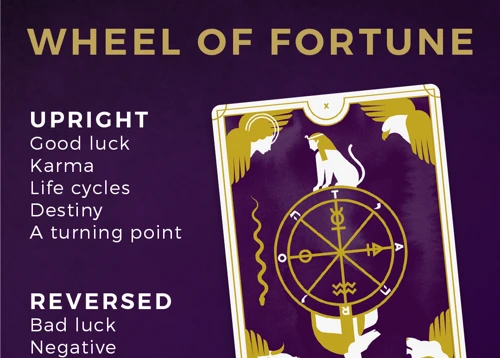Unveiling the secrets hidden within the intricate patterns of tarot cards can be an awe-inspiring journey. However, when these mystical cards appear upside-down, a whole new dimension of symbolism and interpretation comes into play. In this captivating article, we will unravel the enigma of reversed tarot cards and guide you through their profound meanings. Whether you’re a seasoned tarot reader or a curious seeker, get ready to dive deep into the realm of reversed tarot cards and unlock the hidden messages they hold. Prepare to be amazed as we explore the opposite meanings, the blocked energy, and the uncharted influences that reverting these cards bring to light. Join us on this mesmerizing quest to truly comprehend the captivating realm of reversed tarot cards.
Contents
- What Are Reversed Tarot Cards?
- Interpreting Reversed Tarot Cards
- Common Symbolism of Reversed Tarot Cards
- Interpreting Reversed Cards in Different Tarot Spreads
- Tips for Reading Reversed Tarot Cards
- Using Reversed Tarot Cards for Self-Reflection and Growth
- Conclusion
-
Frequently Asked Questions
- 1. What does it mean when a tarot card is reversed?
- 2. Do reversed tarot cards always have a negative meaning?
- 3. How do I know if I should read reversed cards in my tarot readings?
- 4. Can reversed tarot cards completely change the outcome of a reading?
- 5. How do I interpret the opposite meanings of reversed cards?
- 6. Are there any specific tarot spreads that work best with reversed cards?
- 7. Can reversed cards indicate past events rather than future possibilities?
- 8. How do I keep track of the meanings of reversed tarot cards?
- 9. Can reversed cards indicate a need for inner reflection and personal growth?
- 10. Should I be concerned if I frequently draw reversed cards in my readings?
- References
What Are Reversed Tarot Cards?

- Opposite Meanings: Reversed tarot cards, as the name suggests, are cards that appear upside-down during a tarot reading. They hold a different meaning compared to their upright counterparts. While upright cards represent their traditional meanings, reversed cards often signify the opposite or a more nuanced interpretation[1].
- Blocked or Hindered Energy: Reversed tarot cards can indicate blocked or hindered energy within a specific area of life. They suggest that there may be obstacles, resistance, or challenges present, preventing the card’s energy from fully manifesting. These cards serve as a reminder to address and overcome these obstacles to restore harmony and flow[2].
- Hidden Influences: Reversed tarot cards provide insight into hidden influences that may be impacting the situation at hand. They signal that there are subtle forces at play which may not be immediately apparent. These cards encourage a deeper exploration to uncover hidden truths and gain a more comprehensive understanding of the circumstances[3].
Interpreting Reversed Tarot Cards
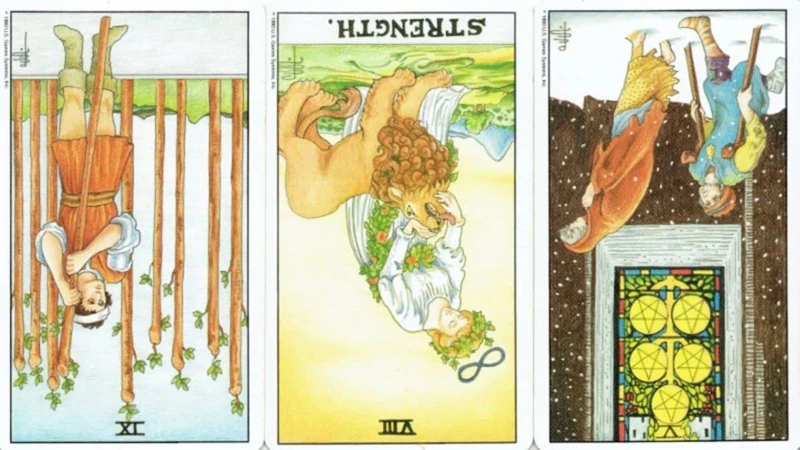
- Understanding the Opposite Meaning: The first step in interpreting reversed tarot cards is to recognize that they often signify the opposite of their upright counterparts. Take the time to understand the contrasting meanings and consider how they apply to the situation or question at hand. This shift in perspective can provide valuable insights and a fresh approach to the reading.
- Recognizing Blocked or Hindered Energy: Reversed tarot cards also indicate blocked or hindered energy within a specific area. Pay attention to any areas in your life where you may be experiencing resistance or obstacles. These cards serve as a reminder to address these challenges and find ways to overcome them, ultimately restoring the flow of energy and allowing for growth and progress.
- Gaining Insight into Hidden Influences: Reversed tarot cards offer a glimpse into the hidden influences that may be affecting a situation. These cards act as a reminder to dig deeper and explore the underlying dynamics that may not be immediately apparent. By uncovering these hidden truths, you can gain a more comprehensive understanding of the circumstances and make more informed decisions.
Understanding the Opposite Meaning
- Reflection and Contrast: When interpreting the opposite meaning of a reversed tarot card, it’s essential to consider its upright counterpart and reflect on the contrasting energies. For example, if the upright card represents success and accomplishment, the reversed card may indicate setbacks, delays, or missed opportunities. It is a sign to approach the situation with caution and reevaluate your approach to achieve the desired outcome.
- Subtlety and Nuance: Reversed tarot cards introduce a layer of subtlety and nuance to the reading. They require a deeper level of understanding and examination. The reversed interpretation may highlight underlying emotions, hidden motivations, or unexpressed desires that need to be acknowledged and addressed in order to move forward.
- Alternate Perspectives: The opposite meaning of a reversed tarot card invites us to explore alternative perspectives and consider different approaches to the situation. It encourages us to step outside of our comfort zones and view the circumstances from a different angle. This shift in perspective can lead to fresh insights and innovative solutions.
- Warning and Precaution: In some cases, the opposite meaning of a reversed tarot card serves as a warning or a cautionary sign. It alerts us to potential pitfalls, challenges, or negative influences that may be lurking beneath the surface. It advises us to proceed with caution, learn from past mistakes, and make informed decisions to avoid unfavorable outcomes.
Recognizing Blocked or Hindered Energy
- Emotional Stagnation: When a reversed tarot card appears, it can indicate emotional stagnation and a sense of being blocked or hindered in one’s emotions. This may suggest suppressed feelings, unresolved issues, or a need for emotional healing. It serves as a gentle nudge to delve deeper into the emotional realm and address any emotional blockages in order to experience true emotional growth.
- Obstacles and Challenges: Reversed tarot cards can also point to external obstacles or challenges that are impeding progress. These obstacles may hinder forward movement or cause delays in achieving goals or desired outcomes. It is important to acknowledge these obstacles and find ways to overcome them in order to regain the flow of energy and move forward with greater ease.
- Resistance to Change: In some cases, reversed tarot cards may indicate resistance to change or a reluctance to embrace new opportunities. This resistance can stem from fear, self-doubt, or a desire to stay in familiar territory. Recognizing this resistance allows for the opportunity to address it and break free from stagnant patterns, leading to personal growth and transformation.
- Blocked Intuition: Reversed tarot cards can also represent a blockage in intuition. This suggests that there may be a disconnect from one’s inner guidance or a lack of trust in one’s intuitive abilities. It prompts the need for introspection and cultivating a stronger connection with one’s intuition, allowing for greater clarity and guidance in decision-making.
Common Symbolism of Reversed Tarot Cards
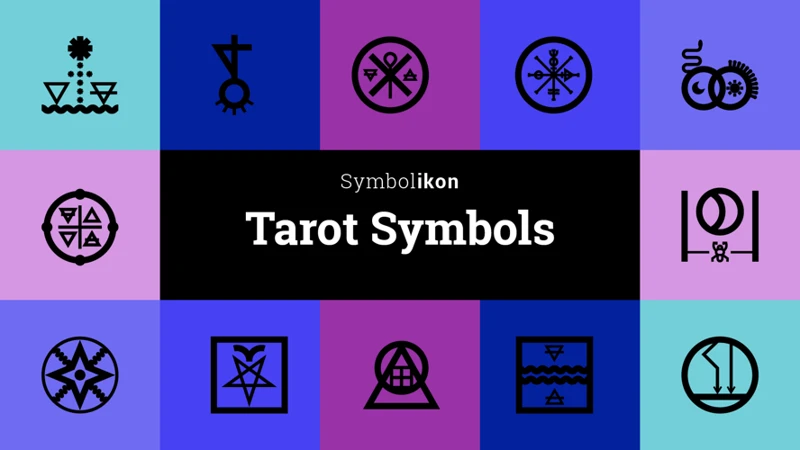
- Upside-Down Imagery: One of the most common symbols associated with reversed tarot cards is the upside-down imagery. The inverted position of the card can indicate a reversal or disruption of the card’s energy. This reversal can highlight a need for reflection, assessment, and a shift in perspective to fully understand the situation at hand.
- Challenged Energy Flow: Reversed tarot cards often represent a challenged or disrupted energy flow. The energy of the card may be blocked or flowing in the opposite direction, suggesting that there may be obstacles or resistance hindering the natural progression of the situation. These cards serve as a reminder to address any imbalances and restore the energy flow.
- Reversed Elemental Associations: In tarot, each suit is associated with one of the four elements – fire, water, air, and earth. When a card is reversed, its elemental association may also be reversed. This reversal of elements can add another layer of symbolism and interpretation to the card, providing deeper insights into the situation.
- Altered Card Meanings: Reversed tarot cards often have altered meanings compared to their upright counterparts. The reversal can modify or intensify the card’s interpretation, indicating a shift in the energy or a need for a different approach to the situation. These altered meanings provide a more nuanced understanding of the reading.
Upside-Down Imagery
- Symbolic Reversal: One of the most notable aspects of reversed tarot cards is the reversal of imagery. When a card appears upside-down, the symbolism depicted on the card is also reversed or altered to some extent. For example, a card that represents growth and abundance may take on a meaning of stagnation or financial difficulties when reversed.
- Disruption and Imbalance: Upside-down imagery in reversed tarot cards often signifies disruption and imbalance. It suggests that the energy associated with the card is not flowing smoothly or harmoniously. The reversed card may indicate that there are obstacles, conflicts, or unresolved issues that are impeding progress.
- Shift in Perspective: The upside-down imagery of a reversed tarot card can also prompt a shift in perspective. It encourages the reader to explore alternative viewpoints and consider different angles. This shift in perspective can help gain a deeper understanding of the situation and uncover hidden aspects that may have been overlooked.
Challenged Energy Flow
When a tarot card appears reversed, it signifies a challenged energy flow within the card’s symbolism and meaning. The energy represented by the card is impeded or disrupted in some way, affecting the overall interpretation. This challenged energy flow can manifest in various forms, such as suppressed emotions, stagnant situations, or conflicts hindering progress. Reversed tarot cards serve as a wake-up call to address these energetic blockages and seek ways to restore the natural flow of energy. They prompt the querent to reflect on what may be causing the disruption and take necessary action to resolve it. By acknowledging and acknowledging the challenged energy flow, one gains valuable insights into the areas of their life that require attention, allowing for growth and transformation.
Reversed Elemental Associations
Altered Card Meanings
Interpreting Reversed Cards in Different Tarot Spreads
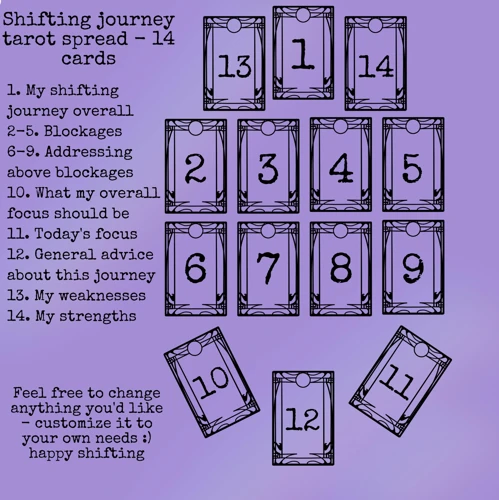
- Past-Present-Future Spread: When interpreting reversed tarot cards in a Past-Present-Future spread, pay attention to the timeline represented by each card position. Reversed cards in the past position may indicate unresolved issues or past traumas that are still affecting the present. In the present position, reversed cards suggest current challenges or blockages that need to be addressed. Reversed cards in the future position may signify upcoming obstacles or areas where extra caution is needed.
- Celtic Cross Spread: In the Celtic Cross spread, reversed cards can offer deeper insights into the central issue or question at hand. They may highlight underlying factors or hidden influences that contribute to the situation. Pay attention to the relationships between the reversed cards and the upright cards, as this can provide valuable clues for understanding the complexity and nuances of the reading.
- Relationship Spread: When using a relationship spread, reversed cards can shed light on blockages or challenges within the relationship. They may indicate areas of miscommunication, emotional barriers, or unresolved conflicts. Pay attention to the specific positions of the reversed cards to understand the nature of these obstacles and how they impact the dynamics between the individuals involved.
- Decision-Making Spread: In a decision-making spread, reversed cards can offer guidance regarding potential outcomes or factors to consider when making a choice. They may highlight hidden risks, internal conflicts, or overlooked aspects that need to be addressed. Consider the reversed cards as cautionary signs or opportunities for introspection before finalizing a decision.
Past-Present-Future Spread
Past Position: In the Past position, reversed cards may indicate unresolved issues or past events that continue to influence the present. They may suggest the need to address and heal past wounds before moving forward.
Present Position: Reversed cards in the Present position often signify current challenges or obstacles that may be hindering progress or causing disruption. They serve as a reminder to address these issues and find ways to overcome them.
Future Position: Reversed cards in the Future position can indicate potential difficulties or delays that may arise in the future. They offer an opportunity for self-reflection and proactive measures to prevent or minimize these challenges.
During a Past-Present-Future spread, if multiple reversed cards appear, it is important to pay attention to the overall energy and patterns present in the reading. The reversed cards may suggest a need for introspection, transformation, and adapting to the changes that lie ahead.
Celtic Cross Spread
- Past Influence: In the Celtic Cross Spread, a reversed tarot card appearing in the first position represents a past influence that is still affecting the present situation. It suggests that there may have been unresolved issues or challenges in the past that are impacting the current circumstances.
- Subconscious Desires: When a reversed card appears in the second position, it indicates the subconscious desires or fears related to the question at hand. These hidden influences may be clouding judgment or causing inner conflicts.
- Conscious Awareness: The third position represents the conscious awareness of the individual. A reversed card in this position suggests that the person may be denying or ignoring certain aspects of the situation, or may have a distorted perception of the reality.
- Recent Past: When a reversed card appears in the fourth position, it symbolizes recent events or experiences that have had an impact on the current circumstances. It signifies that there may have been setbacks or challenges that need to be addressed.
- Higher Self: In the Celtic Cross Spread, the fifth position represents the higher self or the guidance from the spiritual realm. A reversed card in this position could indicate a need for spiritual growth, inner reflection, or a reevaluation of one’s values and beliefs.
- Near Future: When a reversed card appears in the sixth position, it suggests obstacles or challenges that may arise in the near future. It serves as a reminder to remain cautious or to address any underlying issues before moving forward.
- Overall Outlook: The seventh position in the Celtic Cross Spread provides insights into the overall outlook of the situation. A reversed card in this position may signify a need for caution or to prepare for unexpected changes and challenges.
- External Influences: When a reversed card appears in the eighth position, it represents external influences that may be impacting the situation. These influences may come from other people, events, or circumstances beyond the individual’s control.
- Inner Emotions: The ninth position reflects the individual’s inner emotions and feelings towards the situation. A reversed card in this position suggests that there may be hidden emotions, conflicts, or unresolved issues that need to be acknowledged and addressed.
- Outcome: In the Celtic Cross Spread, the last position represents the possible outcome or resolution of the situation. A reversed card in this position may indicate delays, setbacks, or a need for further introspection and adjustments before reaching a desired outcome.
Relationship Spread
- Past-Present-Future: In a relationship spread, the reversed tarot cards can offer valuable insights into the past, present, and future dynamics of a relationship. When interpreting the reversed cards in this spread, consider the way they relate to each other and the narrative they create. For example, a reversed card in the past position may indicate unresolved issues or past traumas impacting the relationship. Similarly, a reversed card in the present position may signify current challenges or obstacles, while a reversed card in the future position can indicate potential obstacles or unresolved issues that may arise[3].
- Communication and Emotional Blocks: Reversed tarot cards in a relationship spread can highlight communication breakdowns, emotional blocks, or unresolved conflicts within the relationship. These cards encourage open and honest communication to address these issues and foster emotional growth and understanding. Pay attention to the specific card meanings to discern the nature of the blocks and the best approach for resolving them. Explore the imagery, symbolism, and reversed meanings to gain a deeper understanding of the relationship dynamics[1].
- Reevaluating Relationship Paths: When interpreting reversed cards in a relationship spread, consider the possibility of reevaluating the current path of the relationship. The reversed cards may indicate the need for changes, adjustments, or a shift in perspective. They may prompt the individuals involved to reassess their goals, desires, and personal growth within the relationship. Reflect on the reversed card meanings in relation to the specific positions they occupy in the spread and seek clarity on the potential direction the relationship may take[2].
Decision-Making Spread
- Position 1: The Present Situation – The first card in the decision-making spread represents the current circumstances and factors surrounding the decision. It provides insight into the immediate influences and challenges that need to be considered.
- Position 2: The Potential Outcome – The second card reveals the potential outcome of each choice. It offers a glimpse into the possible consequences and results that may arise from making a particular decision.
- Position 3: The Pros – The third card highlights the positive aspects and benefits associated with one of the options. It sheds light on the favorable outcomes, advantages, and opportunities that may arise from choosing this path.
- Position 4: The Cons – The fourth card examines the drawbacks and challenges linked to one of the options. It brings attention to the potential obstacles, limitations, and risks associated with choosing this particular path.
- Position 5: The Best Course of Action – The fifth and final card offers guidance on the best course of action. It combines the insights from the previous positions and provides clarity and direction on the most suitable decision to make.
Tips for Reading Reversed Tarot Cards
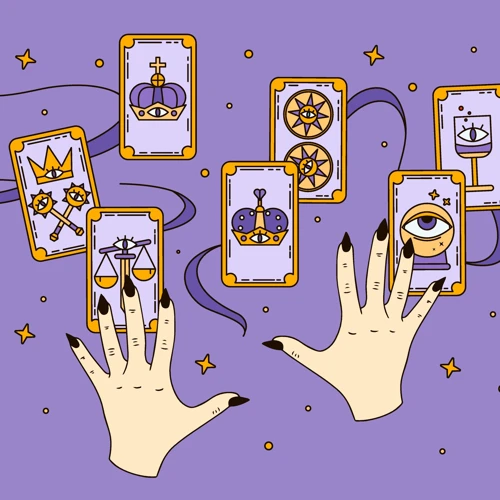
Pay Attention to Surrounding Cards
- Card Relationships: When interpreting reversed tarot cards, it’s crucial to pay attention to the surrounding cards in the spread. The cards’ relationships with one another can offer valuable insights into the reversed card’s meaning. Notice if there are any cards that complement or contradict the reversed card, as this can provide context and clarification.
- Themes and Patterns: Look for recurring themes or patterns among the surrounding cards. Do multiple cards share a similar element or symbolism? Are there any common colors or numbers? These patterns can enhance your understanding of the reversed card’s influence and shed light on its significance within the reading.
- Contrasting Energies: Take note of any contrasting energies between the reversed card and its neighboring cards. Pay attention to the polarity between upright and reversed cards. This contrast can indicate a conflict or tension that needs to be resolved, or it may suggest a need to find balance and harmony between opposing forces.
Trust Your Intuition
- Listen to Your Inner Voice: When reading reversed tarot cards, it is crucial to trust your intuition. Your intuition serves as a powerful guide, providing you with unique insights and interpretations. Pay attention to your initial gut feelings and instincts as you delve into the meanings of the reversed cards.
- Embrace Symbolism: Intuition often speaks in symbols and subtle messages. Look beyond the literal meanings of the cards and allow your intuition to recognize the symbolic significance of the reversed cards. Consider the colors, imagery, and overall energy that the cards convey. Trust the symbolic language of the tarot to guide your interpretations.
- Connect with Your Higher Self: Trusting your intuition requires connecting with your higher self or the divine realm. Take a moment to center yourself before each reading and establish a connection with your spiritual intuition. This connection will help you tap into a deeper level of understanding when interpreting the reversed tarot cards.
- Practice, Practice, Practice: Trusting your intuition is a skill that develops over time. The more you practice working with reversed tarot cards, the more familiar you will become with their unique symbolism and meanings. Embrace each reading as an opportunity to fine-tune your intuitive abilities and strengthen your trust in the messages revealed by the reversed cards.
Consider Reversals as a Message of Balance
Keep a Journal of Reversed Card Meanings
Using Reversed Tarot Cards for Self-Reflection and Growth
1. Reflection: Reversed tarot cards prompt us to reflect on areas of our lives that may need attention or reassessment. They encourage us to examine our beliefs, behaviors, and patterns that may be hindering our progress or causing disharmony. By contemplating the reversed cards, we gain valuable insights into our own psyche and can make conscious choices for personal growth and transformation.
2. Shadow Work: The appearance of reversed tarot cards invites us to embrace our shadow self – the parts of us that we often hide or ignore. These cards bring to light our fears, insecurities, and unresolved issues, giving us an opportunity to address and heal them. Through shadow work, we can integrate these aspects, leading to self-acceptance and wholeness.
3. Challenging Assumptions: Reversed tarot cards can also challenge our preconceived notions and invite us to consider alternative perspectives. They encourage us to step outside of our comfort zones and explore new possibilities. By embracing the unexpected and unknown, we open ourselves up to growth and expansion.
4. Developing Intuition: Working with reversed tarot cards enhances our intuitive abilities. These cards often require us to rely on our inner wisdom and intuition to interpret their meanings. As we practice interpreting the reversed symbolism, we strengthen our intuitive muscle and deepen our connection with the cards.
Using reversed tarot cards for self-reflection and growth is an empowering practice that allows us to gain profound insights into ourselves and navigate life’s challenges with greater clarity. By embracing the messages of the reversed cards, we embark on a journey of personal transformation and self-discovery.
Conclusion
- A Deep Dive into Reversed Tarot Cards: Throughout this journey, we have delved into the fascinating realm of reversed tarot cards. From understanding their opposite meanings to recognizing blocked energy and uncovering hidden influences, we have explored the rich symbolism and interpretation that these cards offer.
- Enhancing Tarot Readings: Incorporating reversed tarot cards into readings adds an extra layer of depth and complexity. They allow for a more nuanced understanding of the energies at play and provide guidance on how to navigate challenges and obstacles.
- Self-Reflection and Growth: Reversed tarot cards can be instrumental in introspection and personal growth. They prompt us to confront blocked energy, recognize hidden influences, and seek balance in our lives. By keeping a journal of reversed card meanings and trusting our intuition, we can uncover valuable insights and embark on a transformative journey of self-discovery.
As we conclude this article, remember that tarot card readings, both upright and reversed, serve as a powerful tool for introspection, guidance, and self-awareness. Whether you are a seasoned tarot reader or a curious seeker, the understanding of reversed tarot cards opens up a world of possibilities and deepens your connection to the mystical realm of tarot.
Frequently Asked Questions
1. What does it mean when a tarot card is reversed?
When a tarot card appears reversed, it means that the card has been drawn upside-down during a reading. This reversal changes the meaning of the card and suggests an opposite or altered interpretation.
2. Do reversed tarot cards always have a negative meaning?
No, reversed tarot cards do not always have negative meanings. While they can indicate challenges or blocked energy, they also provide valuable insights and opportunities for growth and self-reflection.
3. How do I know if I should read reversed cards in my tarot readings?
Whether or not to include reversed cards in your readings is a personal preference. Some tarot readers choose to shuffle the deck in a way that allows for reversed cards, while others prefer to read only the upright cards. It’s important to find an approach that feels intuitive and authentic to you.
4. Can reversed tarot cards completely change the outcome of a reading?
Reversed tarot cards can certainly add depth and nuance to a reading, but they don’t necessarily change the overall outcome. Instead, they provide additional perspectives and insights that can contribute to a more comprehensive understanding of the situation.
5. How do I interpret the opposite meanings of reversed cards?
Interpreting the opposite meanings of reversed cards requires considering the context of the reading. It’s important to examine the surrounding cards, the specific tarot deck being used, and trust your intuition. Reversed cards often offer a different perspective or a warning to approach the situation with caution.
6. Are there any specific tarot spreads that work best with reversed cards?
While reversed cards can be incorporated into any tarot spread, certain spreads lend themselves well to their interpretation. Spreads like the Celtic Cross or Decision-Making spread provide a more comprehensive exploration of the energies and influences surrounding the situation, making them ideal for working with reversed cards.
7. Can reversed cards indicate past events rather than future possibilities?
Yes, reversed cards can sometimes indicate past events or experiences that are still impacting the present moment. They may serve as a reminder to address unresolved issues or to reassess past decisions in order to move forward.
8. How do I keep track of the meanings of reversed tarot cards?
Keeping a journal of the meanings of reversed tarot cards can be an excellent way to track your personal interpretations and insights. Note down the symbolism, emotions, or intuitive messages that arise when you encounter reversed cards to develop a deeper understanding of their meanings over time.
9. Can reversed cards indicate a need for inner reflection and personal growth?
Absolutely! Reversed cards often invite us to look within, explore our inner worlds, and reflect on our beliefs, attitudes, and behaviors. They offer an opportunity for personal growth, introspection, and self-improvement.
10. Should I be concerned if I frequently draw reversed cards in my readings?
Drawing a high number of reversed cards in your readings doesn’t necessarily indicate something negative. It could simply be a reflection of the energy you’re currently working through or a sign that you’re being challenged to address certain aspects of your life. Explore the messages of the reversed cards with an open mind and embrace the learning opportunities they present.
